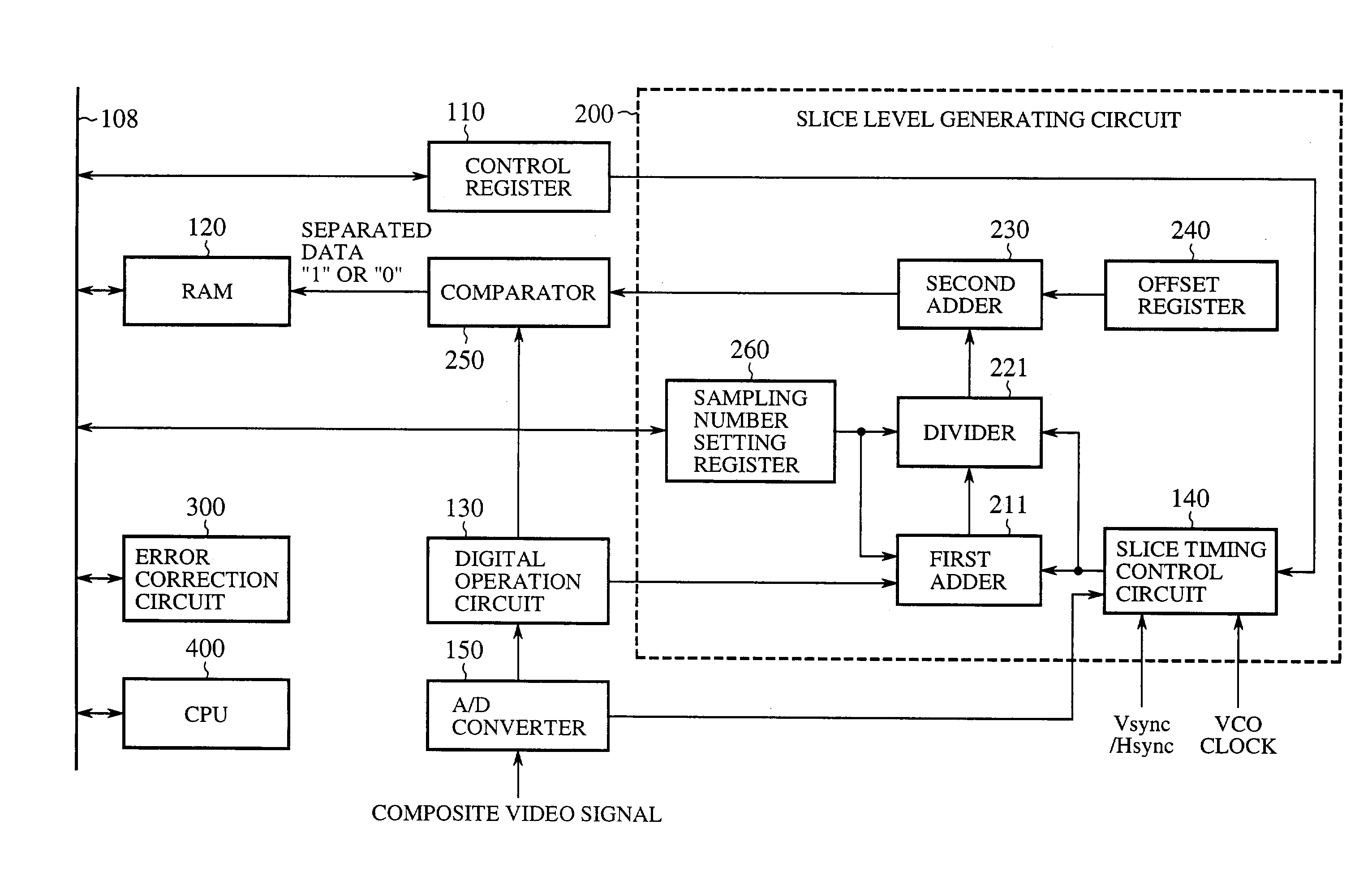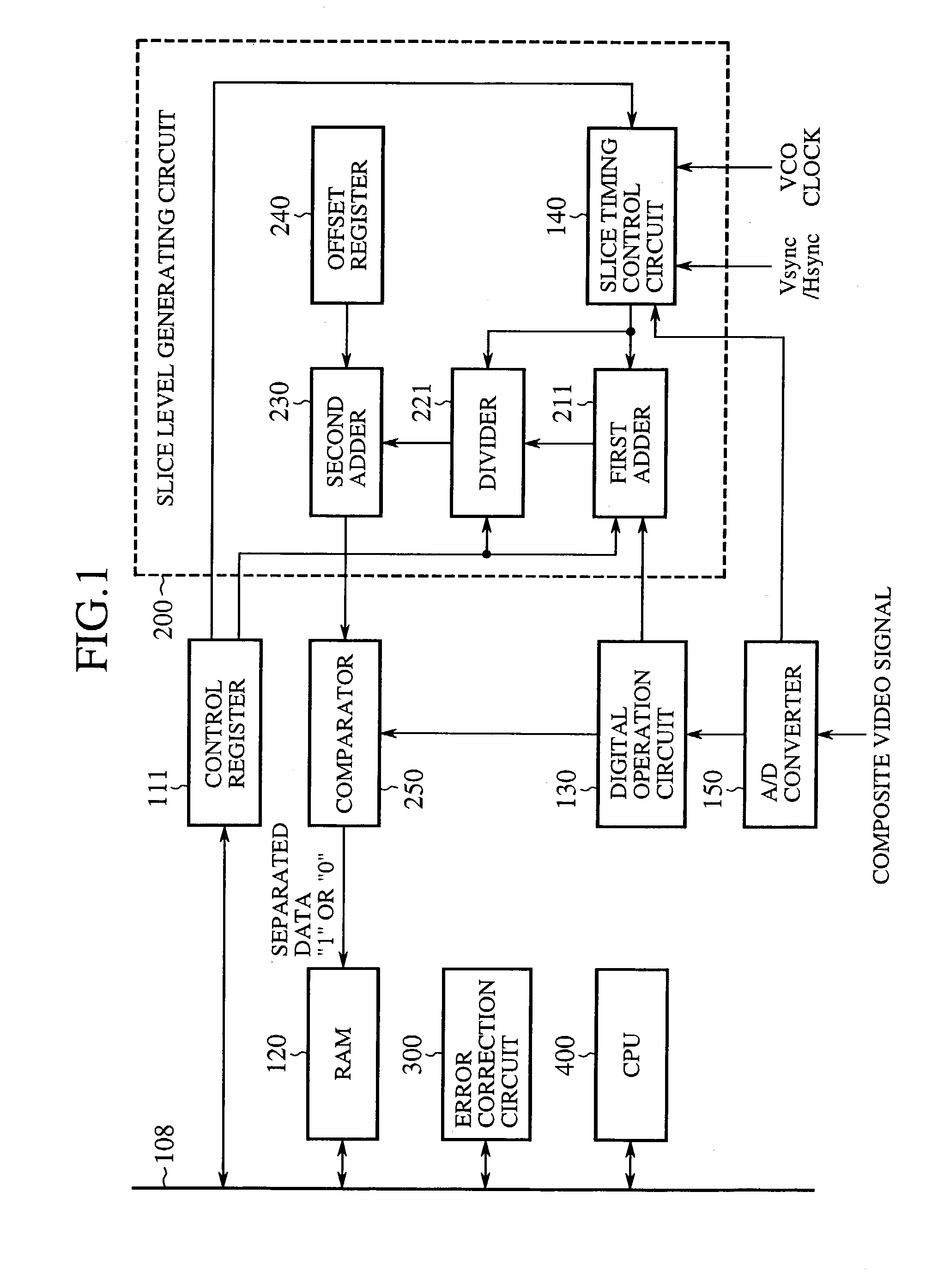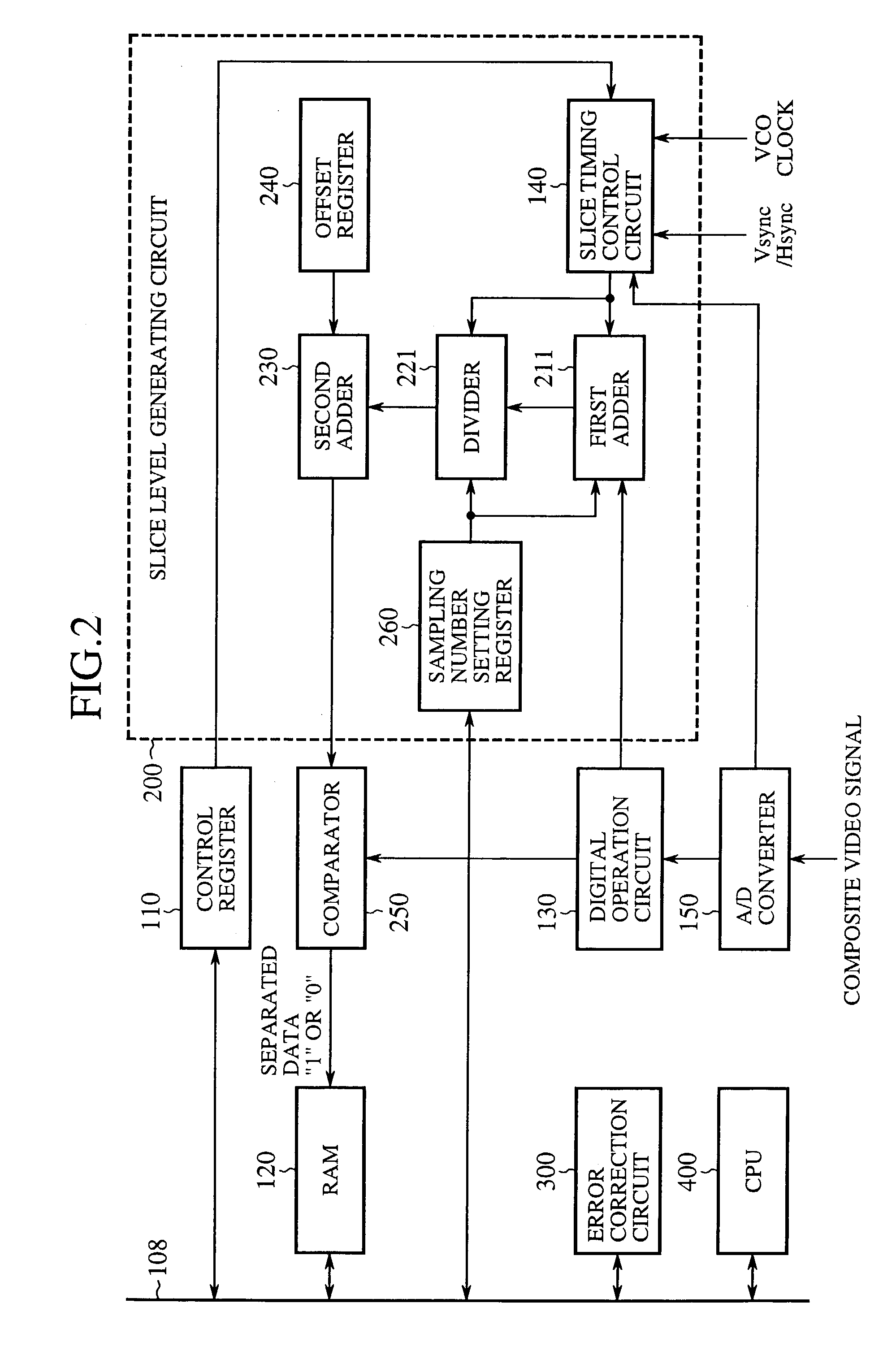Teletext data separation apparatus
a technology of teletext data and separation apparatus, which is applied in the direction of plural information simultaneous broadcast, signal generator with optical-mechanical scanning, television system, etc., can solve the problems of increasing current consumption or spurious emission of processing circuit, unable to achieve an appropriate level, and unable to generate satisfactory slice levels, etc., to reduce the adverse effect of power supply noise, reliable separation of teletext data, and improved conversion accuracy of a/d converter
- Summary
- Abstract
- Description
- Claims
- Application Information
AI Technical Summary
Benefits of technology
Problems solved by technology
Method used
Image
Examples
embodiment 1
[0046]FIG. 1 is a block diagram showing a configuration of an embodiment 1 of the teletext data separation apparatus in accordance with the present invention. In FIG. 1 the same reference numerals as those of FIG. 14 designate the same portions, and the description thereof is omitted as a rule. In FIG. 1, the reference numeral 111 designates a control register, 211 designates a first adder, 221 designates a divider, 300 designates an error correction circuit, and 400 designates a CPU.
[0047]As described before, the conventional circuit uses 16 sampling points to generate the slice level. In contrast with this, the present embodiment 1 generates the slice level as follows.
[0048]The control register 111 includes bits for changing the number of the sampling points. The RAM 120 stores the slice data that includes a Hamming code or parity bits for the error correction. The slice data is once read by the CPU 400 via a bus 108, and undergoes the identification of the data, the parity check,...
embodiment 2
[0052]FIG. 2 is a block diagram showing a configuration of an embodiment 2 of the teletext data separation apparatus in accordance with the present invention. In FIG. 2, the same or like portions to those of FIG. 1 are designated by the same reference numerals, and the description thereof is omitted as a rule. The reference numeral 110 designates a control register, and 260 designates a sampling number setting register for setting the number of the sampling points of the first adder 211 and divider 221.
[0053]The present embodiment 2 includes the sampling number setting register 260 to control the operation of the first adder 211 and divider 221 so that the number of the sampling points can be varied in response to the reception state as described in the foregoing embodiment 1. Thus, the general operation equations of the first adder 211 and divider 221 are given by the following equations.
F(a)′=a1+a2+ . . . +an
G(x′)′=x′ / n
where n is the value set by the sampling number setting regist...
embodiment 3
[0055]FIG. 3 is a block diagram showing a configuration of an embodiment 3 of the teletext data separation apparatus in accordance with the present invention. In FIG. 3, the same or like portions to those of FIG. 2 are designated by the same reference numerals, and the description thereof is omitted as a rule. In FIG. 3, the reference numeral 270 designates an operation starting position setting register.
[0056]In the bad reception conditions, the number of the clock pulses can vary, and an irregular signal with insufficient peak value or waveform can occur. Since the positions of the sampling points for the slice level are located in the initial two clock pulse portion of the clock run-in signal, the irregular waveform lacking this portion will disable the generation of the appropriate slice level. Considering this, the present embodiment 3 carries out the following operation.
[0057]The operation starting position setting register 270 instructs the slice timing control circuit 140, w...
PUM
 Login to View More
Login to View More Abstract
Description
Claims
Application Information
 Login to View More
Login to View More - R&D
- Intellectual Property
- Life Sciences
- Materials
- Tech Scout
- Unparalleled Data Quality
- Higher Quality Content
- 60% Fewer Hallucinations
Browse by: Latest US Patents, China's latest patents, Technical Efficacy Thesaurus, Application Domain, Technology Topic, Popular Technical Reports.
© 2025 PatSnap. All rights reserved.Legal|Privacy policy|Modern Slavery Act Transparency Statement|Sitemap|About US| Contact US: help@patsnap.com



